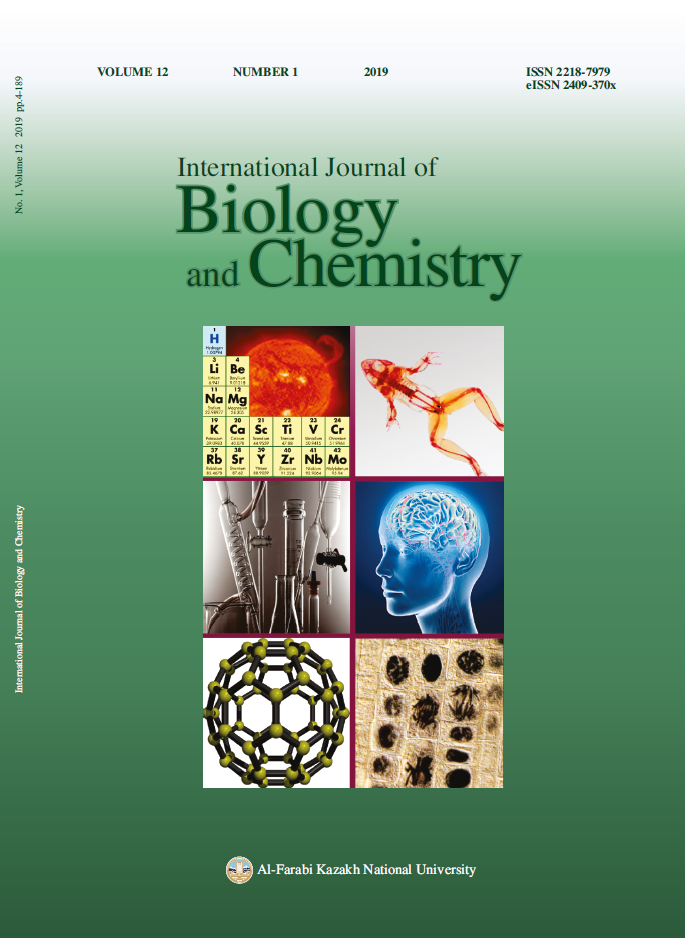Study of the hexane fraction isolated from the substance obtained from the roots Limonium Gmelinii by GC-MS
DOI:
https://doi.org/10.26577/ijbch-2019-i1-1Abstract
Current paper presents the results of chemical study of the non-polar fraction obtained from the substance isolated from the roots of Limonium gmelinii (Willd.). Limonium gmelinii is a perennial wildgrowing plant with a flowering period in June-September. It is found in all regions of Kazakhstan, western and eastern Siberia, European part of Russia, Central Asia, Southeastern Europe, Western China and Mongolia. Roots of Limonium gmelinii are introduced into the medicine and State Pharmacopoeia of the Republic of Kazakhstan. In this work, we obtained a substance using ultrasound to intensify the extraction process, which is effective, both from the economic and ecological side. Limonium gmelinii plants were harvested in Almaty region in 2018. Extracts were obtained by solvent extraction of a dry substance isolated from the roots of the studied plants with hexane, and studied by chromatography – mass spectrometry on a gas chromatograph with a mass-selective detector. In non-polar extract obtained from such substance, 27
individual compounds were identified, most of them are represented by higher fat-soluble hydrocarbons that are a part of natural waxes and resins; particularly high content of tetradecane, pentadecane, hexadecane, genicosane, octadecane, eicosane and their isomers was noted. In addition, the presence of a quinoline derivative in the form of 1,2-dihydro-2,2,4-trimethyl-quinoline was observed. For comparison, non-polar extract directly from the roots of Limonium gmelinii comprised 15 compounds belonging to the classes of hydrocarbons and esters of higher carboxylic acids. Dominating are hexadecanoic acid, ethyl ester, ethyl oleate, linoleic acid ethyl ester. In addition, a number of hydrocarbons, such as heptadecane, octadecane and tetradecane, and a quinoline derivative of 1,2-dihydro-2,2,4-trimethyl quinolone as well as phenol 2,4-bis (1,1-dimethylethyl) have been identified.
Downloads
How to Cite
Issue
Section
License
ааа





